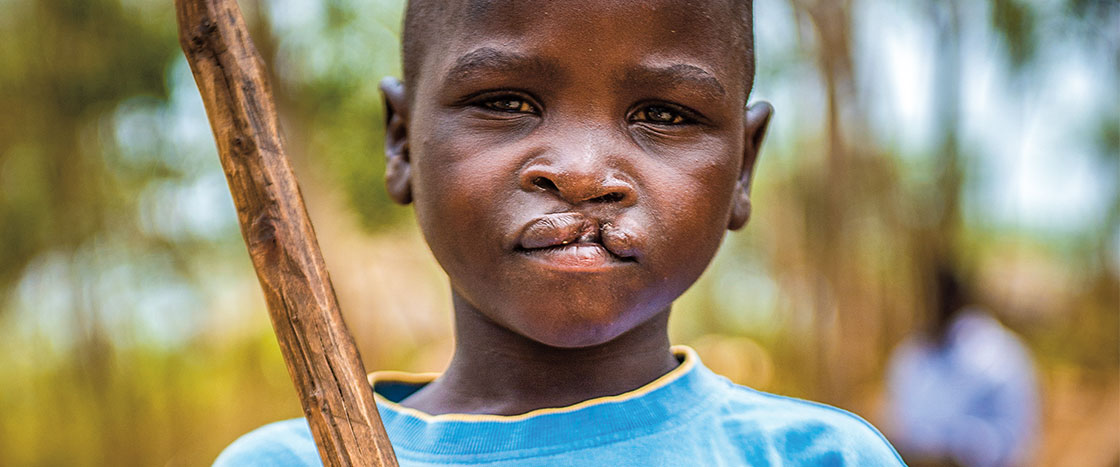Inside a small schoolhouse, smiling students sang with their teacher. But in the front row, one boy sat glumly. His mouth barely moved. His eyes looked at the floor.
This was 6-year-old Osawa.
Osawa [oh-SAH-wah] lived in a quiet village of Tanzania, a country in Africa. He didn’t have many friends. Most of his neighbors didn’t trust him. They said Osawa was cursed.
What did Osawa do to deserve such a lonely life? Why were people so cruel?
In fact, Osawa had done nothing. He was simply born looking different from most people. He had a cleft lip, which means that his mouth and lip were misshapen. Like most kids with clefts, Osawa struggled to chew, to swallow, and to say certain sounds.
Inside a small schoolhouse, smiling students sang with their teacher. But in the front row, one boy sat glumly. His mouth barely moved. His eyes looked at the floor.
This was 6-year-old Osawa.
Osawa [oh-SOW-uh] lived in a quiet village of Tanzania. Tanzania is a country in Africa. He had few friends. Many of his neighbors were scared of him. They said Osawa was cursed.
Why did Osawa have such a lonely life? Why were people so mean to him?
In fact, Osawa had done nothing wrong. He was born looking different from most people. He had a cleft lip, which means that his mouth and lip were misshapen. Like most kids with clefts, Osawa had a hard time chewing, swallowing, and saying some sounds.

